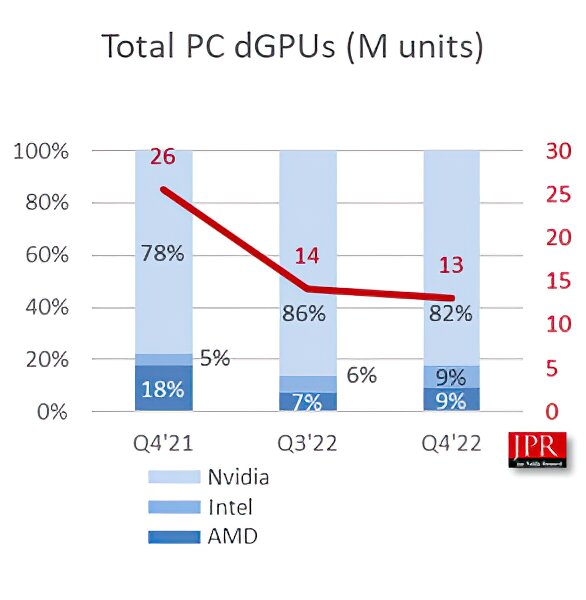In the world of technology, both GPUs and central processing units play important roles, yet they serve diverse purposes that can markedly impact efficiency. While most users are familiar with the CPU, the GPU has gained greater recognition in the past few years. This is mainly due to the increase of graphics-intensive applications such as video games, video production, and AI development, where the GPU's parallel processing capabilities excel. Understanding what a GPU is and how it is distinct from a CPU is vital for anyone looking to optimize their computing experience.
The GPU market has seen rapid growth as more users seek tap into the capabilities of these specialized processors. Unlike CPUs, which excel at managing a broad spectrum of tasks with high precision, GPUs are designed to handle various operations concurrently. This is notably beneficial for tasks that involve large volumes of data and require rapid processing. As technology keeps to develop, the importance of GPUs in multiple fields is merely expected to rise, making it crucial to investigate their special attributes and applications.
Understanding Graphics Processing Units and CPUs
GPUs, or Graphics Processing Units, are dedicated hardware designed to enhance the rendering of pictures and video. Unlike Central Processing Units, which are tuned for general-purpose tasks and can manage a broad range of computations, graphics processors excel at parallel processing. This means they can carry out numerous calculations at the same time, making them well-suited for creating graphics, executing complex algorithms, and analyzing large data groups in fields like ML and scientific computing.
The structure of a graphics processing unit is fundamentally different from that of a CPU. A CPU typically consists of a few strong cores optimized for ordered task execution, able of dealing with tasks that need high single-threaded performance. In contrast, a GPU contains thousands of smaller cores aimed at processing multiple tasks at once. This design allows graphics processors to handle simultaneous workloads more efficiently, which is essential for contemporary graphics and data-intensive programs.
The increase of the graphics processing unit market has changed various sectors beyond video games and graphics design. With the growing demand for powerful computing and artificial intelligence, GPUs are now key to data centers and cloud computing. Their capability to speed up workloads has made them necessary for researchers, engineers, and companies looking to utilize advanced technologies. This shift highlights the important role GPUs play in determining the future of computing and the importance of grasping the differences between GPUs and CPUs.
Current Trends in the GPU Market
The GPU market has experienced remarkable growth in the past few years, driven largely by the increasing demand for graphic capabilities in video games, artificial intelligence, and machine learning applications. As an increasing number of consumers interact with high-definition gaming and engaging virtual experiences, companies are creating to produce GPUs that fulfill these developing needs. The release of next-generation GPUs has introduced significant progress in performance and power efficiency, catering not only to gamers but also to specialists requiring robust computational capabilities.
A notable trend is the rise of graphics cards designed specifically for AI and deep learning workloads. Numerous tech companies are allocating funds heavily in these specialized units, recognizing their significance in processing large datasets and educating complex models. This shift signifies that conventional gaming GPUs are now being repurposed to serve a broader audience, including academic professionals and programmers in the AI field. The expansion of GPU functions has opened new channels for profit and fostered greater competition among manufacturers.
Furthermore, market dynamics have changed towards eco-friendliness and resource management. As gpuprices.ai become more prominent, GPU manufacturers are striving to create products that require less energy while delivering top-notch results. Innovations in chip design, thermal management, and industrial processes are becoming central to captivating environmentally conscious consumers. This trend reflects a growing recognition of the importance for technology to evolve in alignment with green initiatives, influencing consumer behavior across different consumer segments.
Effect on Computer Efficiency

The introduction of Graphics Processing Units has substantially transformed the field of computing efficiency, particularly in tasks that demand heavy processing power. In contrast to Central Processing Units, which are proficient at sequential processing and managing general-purpose tasks, GPUs are designed for parallel processing. This allows them to process thousands of threads at once, making them especially effective for graphics rendering, scientific models, and machine learning applications. As a result, GPUs have become essential in industries that depend on processing large volumes of data quickly.
In the GPU market, the need has seen exponential growth, propelled by advancements in video gaming, VR, and AI. As gamers and professionals seek improved performance and more realistic visuals, the need for high-performance GPUs has risen. Additionally, ML and AI applications have additionally boosted this demand, as these fields need robust hardware to handle large datasets. The competition among manufacturers has also led to swift technological innovations, yielding GPUs capable of exceptional performance levels.
Ultimately, the difference between GPUs and CPUs comes down to their architecture and function. While CPUs remain key for everyday computing tasks, GPUs provide the specialized power necessary for high-performance computing environments. In this changing landscape, understanding the capabilities and limitations of each is important for anyone looking to utilize technology effectively, whether for personal use or within enterprise-level solutions.
